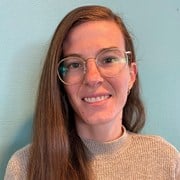A recirculating aquaculture system (RAS) is a shore-based fish farm that reuses its water by cleansing it using successive mechanical and biological processes before returning it to the fish tanks.
“The principle behind water reuse in an RAS facility is that it enables us to extract only very small volumes of new water to maintain operations”, explains SINTEF researcher Charlotte Volpe.
Volpe is part of a research team participating in an innovation project called Wasteless in collaboration with facility designers Nofitech and salmon smolt producers Hardingsmolt. The project, which is being funded by the Research Council of Norway, has been looking into how RAS facility operations can be made even more circular.
Natural water cleansing
It is currently common practice to add more water to RAS fish tanks if nitrogen concentrations are found to be too high for the fish.
“But freshwater is an important and limited resource”, explains Volpe. “This is why we’ve been working to minimise its use by cleansing and reusing the water that is already in the systems. Our main focus has been to investigate how we can cleanse the water naturally by exploiting the microbial community that already exists in the tanks. This process is called bioremediation”, she says.

Diatomaceous algae may look like green scale, but in fact they contain many useful substances. Photo: SINTEF
Hardingsmolt’s production facilities use water that contains high concentrations of nutrients, including phosphates, ammonia and nitrates, as well as fish excrement. The Wasteless research team has been looking into ways of exploiting this nutrient-rich water.
Fertiliser and fish feed
Volpe explains that her team has been conducting tests to see if the nitrogen and CO2 in the water contained in the RAS modules (tank systems) can be used to convert an algal biofilm into a biomass that can be harvested on a regular basis and used as either a nutrient-rich fertiliser or fish feed ingredient.
Facts about nitrogen:
- Nitrates, which are harmful to fish in high concentrations, are currently either discharged from RAS facilities in wastewater or emitted as nitrogen gas into the atmosphere. This represents the waste of a useful resource.
- Nitrogen that is absorbed from the atmosphere by the reverse process and bound in artificial fertilisers contributes to high levels of global energy consumption and generates a significant carbon footprint.
- Discharges to the ocean of water containing high concentrations of nutrients may result in algal blooms, which are detrimental to biodiversity and marine ecosystems. Source: SINTEF
“We have harvested and analysed the biomass from the RAS tanks and have found that it is dominated by diatoms, also known as diatomaceous algae”, says Volpe. “These algae are rich in proteins and lipids, and recent research has demonstrated that they have a major potential as fish feed”, she explains.
Identical test results
The tests were carried out at SINTEF’s SeaLab laboratory in collaboration with researchers from NTNU, who conducted the experiments. The team developed laboratory pilots to simulate both bioremediation and algal growth under controlled conditions, investigating the effects of a variety of nutrient concentrations and different harvesting intervals. At the same time, the team also carried out pilot experiments at Hardingsmolt’s RAS facilities.
“The results we obtained from the lab were exactly the same as those from the facilities”, says Volpe. “This confirmed that we have developed a reliable test environment at SeaLab that we can use for future research into RAS systems”, she says.
Constructing a new module
Volpe’s team is now working to upscale the pilot and design what may in the future become a new type of RAS module. Currently, water cleansing in RAS systems represents a cost that will most probably increase with the introduction of new regulations. A bioremediation module that not only cleanses the water ‘free of charge’ but also produces an exploitable biomass will thus be very useful.
The Wasteless project will continue until 2025, and the researchers are already discussing possible new projects. The next stage will be to construct an upscaled pilot that can produce sufficient biomass to enable a fish feeding experiment to be carried out”, says Volpe.


